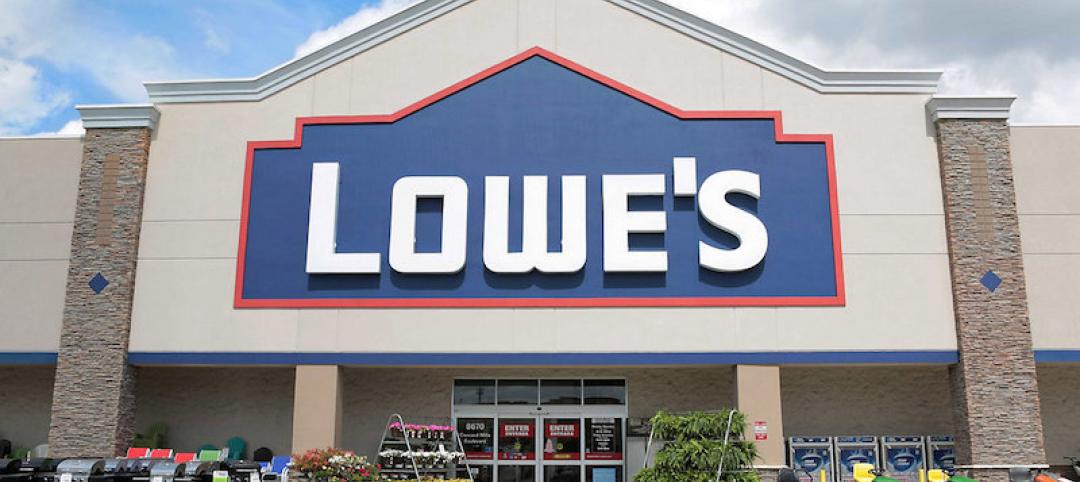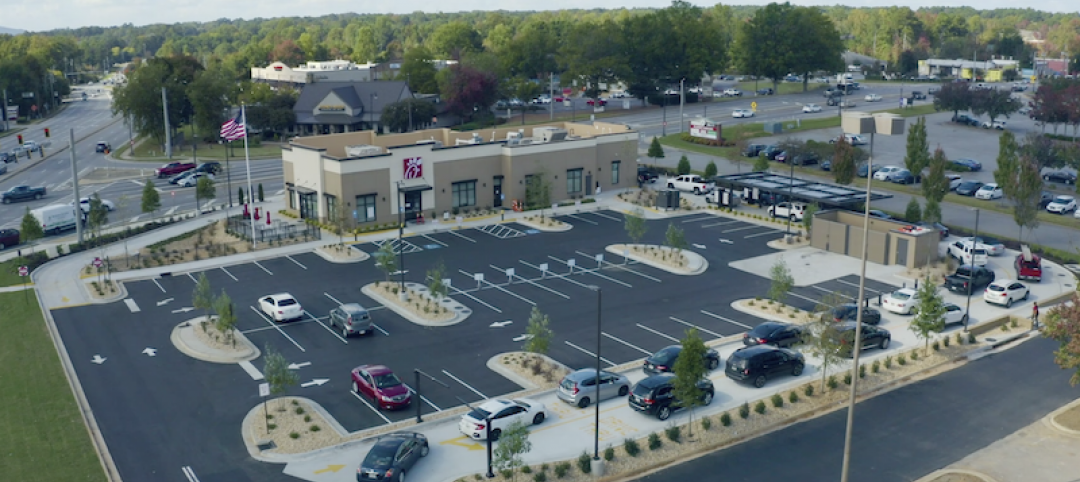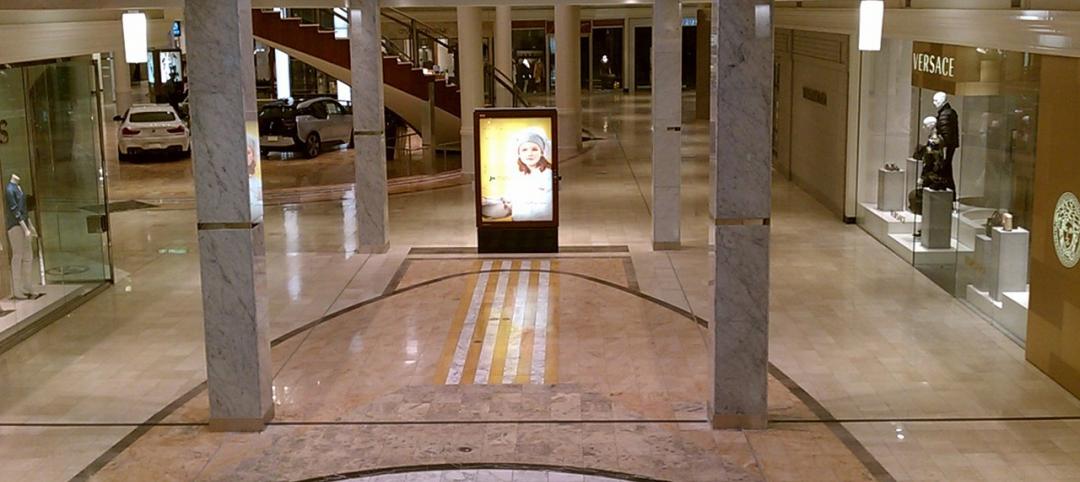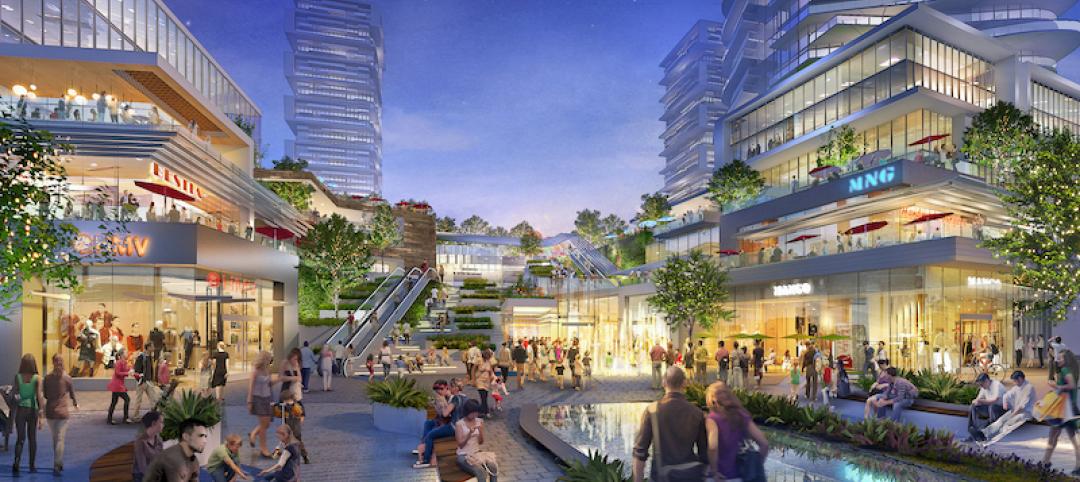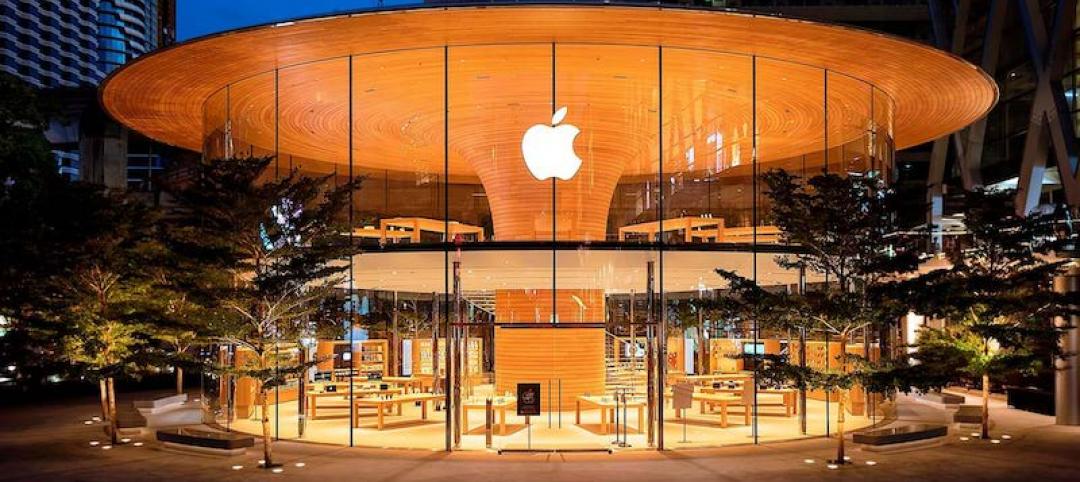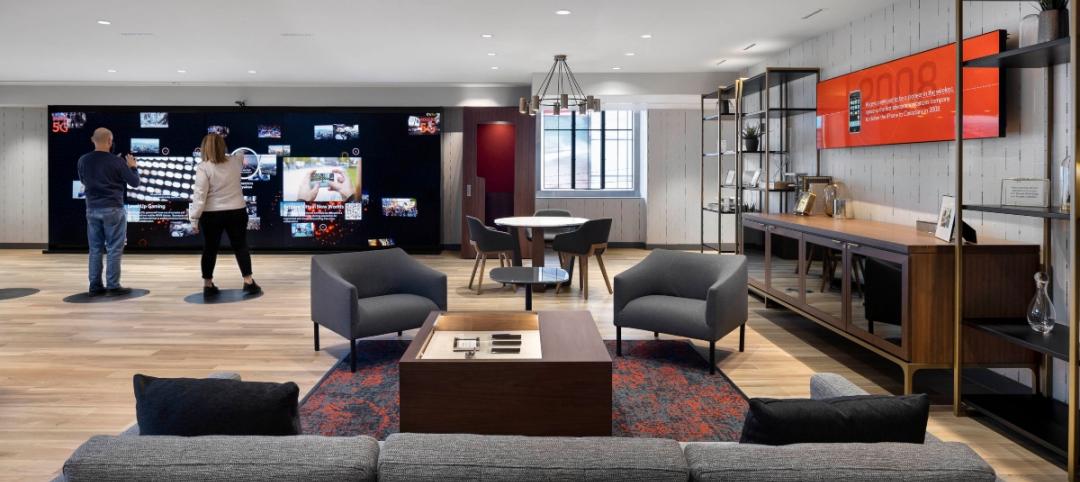The shopping mall of tomorrow will be more like a community center, with access to mass transit, offices, apartments, museums, and services like childcare. Already, some malls have become micro cities that are “changing the face of American retail,” according to CallisonRTKL in its “Mall of the Future,” a compendium of ideas and design trends that the firm believes could drive where shopping malls and retail will be heading over the next two decades.
The firm’s portfolio includes some of the world’s largest and most complex retail malls, so it’s not surprising that CallisonRTKL foresees shopping centers as focal points of urbanized living. Indeed, the firm all but predicts that malls that don’t move in this direction are in danger of becoming extinct at a time when at least one-third of the 1,200 retail malls in the U.S. are on death’s doorstep, and customer expectations about their shopping experiences are rapidly evolving.
'Design wise, malls will require twice the common area of typical malls we see today.'
For one thing, customers want to get out of their cars. CallisonRTKL’s report cites research from the Urban Land Institute, which finds a strong preference among all adult age groups to live in or near mixed-use, walkable neighborhoods.
More broadly, the new generation of shopper is seeking new experiences, not just waiting for them. Retail centers must be flexible in their spaces and assortments to continually offer enough variety that can drive customer traffic. Citing research from Medallia Analysis, CallisonRTKL points out that satisfied customers spend, on average, 140% more than people who are less satisfied with their shopping experiences.
Despite double-digit growth in online shopping in recent years, CallisonRTKL remains bullish on bricks-and-mortar shopping centers.
One of their major competitive responses to online shopping’s encroachment has been food: CallisonRTKL notes that for the first time ever, Americans in 2015 spent more money on dining out than on buying groceries. So malls are adding higher-end restaurants that feature local cuisine. More retail centers are giving customers the option of ordering food online and picking it up at the mall. Some centers have even programmed space for farmers’ markets and community gardens.
Technology is transforming the mall environment. It is unleashing areas used for warehouse space for “click and collect” products and same-day delivery of online sales. More malls are installing interactive maps and wayfinding signage. The Internet of Things is helping retailers market directly and instantaneously to wired shoppers via their smartphones.
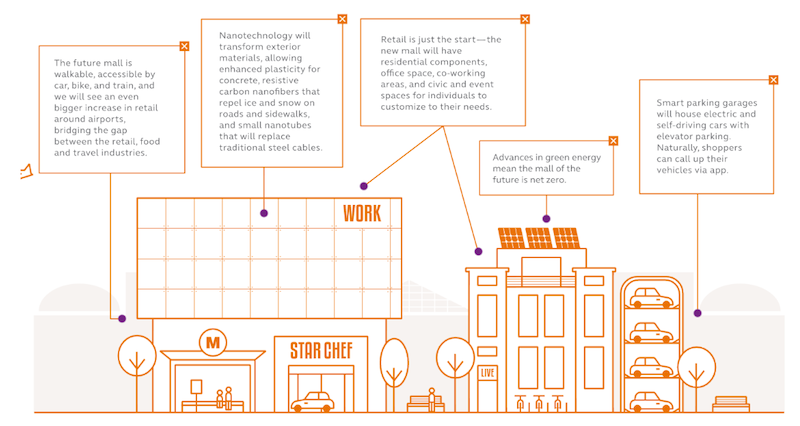 Shopping will just be one facet of tomorrow's successful malls, which will tap into customers' desire to live in walkable, greener communities. Image: CallisonRTKL's “Mall of the Future” report
Shopping will just be one facet of tomorrow's successful malls, which will tap into customers' desire to live in walkable, greener communities. Image: CallisonRTKL's “Mall of the Future” report
CallisonRTKL expects all of these trends to become more widely applied in the malls of tomorrow. The firm foresees walkable malls accessible by public transit or bicycles. Malls will include residential, office, civic, and event spaces. They will be powered by renewable energy. Smart parking garages will accommodate electric cards, and driver apps. The firm also expects more malls to be built near airports, “bridging the gap between retail, food, and travel industries.”
Technology will seep into every aspect of a mall’s design, construction, and operations. “It’s not about gadgets; it’s about infrastructure,” CallisonRTKL wrote. Nanotechnology will help develop better, more durable building products with smaller carbon footprints. Click and collect “will remain and must,” and be much quicker. Broader and better connectivity will provide a customized shopping experience. Stores will include interactive fitting suites that allow customers to digitally try on products before ordering them online. Stores will stock less, and use extra space for warehousing inventory for same-day drone delivery.
Rooftops of malls will be employed for entertainment, dining, and gardens, and be “greener” by reducing heat transmission and water runoff. Customers will use apps to have food and goods delivered anywhere, with alerts for when the pickup is ready and where. Robot delivery will be an option for some malls.
Food will anchor the retail experience, in the forms of restaurants, farms, pop-up vendors, specialty stores, and food festivals. Some of these could be programmed to change daily.
CallisonRTKL goes so far as to suggest that some malls might allow diners the option of growing their own dinners from onsite vegetable gardens and urban beehives. At the very least, successful malls will have pop-up infrastructures that are anchored by preset retail common areas. “Design wise, malls will require twice the common area of typical malls we see today.”
CallisonRTKL foresees more consumers actively seeking shopping experiences that align with their environmentalist inclinations. Streamlined sourcing labels, more dependable vetting processes, and increased connectivity will make it easier for shoppers to choose retailers and products that have a positive effect. “This is a consumer-driven movement that is only going to grow stronger in the next few years.”
Related Stories
Warehouses | Nov 9, 2020
Lowe’s rides ecommerce wave by expanding its distribution and delivery capacities
The retail giant will also open four more bulk warehouses, including a 1.2-million-sf DC in Alabama it is building with Clayco.
Retail Centers | Nov 2, 2020
Chick-fil-A introduces modular building program for rebuilding and remodeling existing restaurants
The first location to use this rebuild style reopens on Oct. 15 near Atlanta.
Adaptive Reuse | Oct 26, 2020
Mall property redevelopments could result in dramatic property value drops
Retail conversions to fulfillment centers, apartments, schools, or medical offices could cut values 60% to 90%.
Retail Centers | Sep 17, 2020
The Weekly show: Breaking the rules of retail, and the Household Model for assisted living facilities
This week on The Weekly, BD+C editors spoke with leaders from CallisonRTKL, MBH Architects, and McMillan Pazdan Smith on three topics: breaking the rules of retail, the Household Model for assisted living facility design, and designing labs to address the coronavirus and future health events.
Airports | Sep 10, 2020
The Weekly show: Curtis Fentress, FAIA, on airport design, and how P3s are keeping university projects alive
The September 10 episode of BD+C's "The Weekly" is available for viewing on demand.
Giants 400 | Aug 28, 2020
2020 Giants 400 Report: Ranking the nation's largest architecture, engineering, and construction firms
The 2020 Giants 400 Report features more than 130 rankings across 25 building sectors and specialty categories.
Coronavirus | Aug 25, 2020
Video: 5 building sectors to watch amid COVID-19
RCLCO's Brad Hunter reveals the winners and non-winners of the U.S. real estate market during the coronavirus pandemic.
Retail Centers | Aug 19, 2020
How has shopping changed over the past 100 years? A look at the evolution of retail
From malls and big-box stores to online delivery and mall redevelopment: Here’s how the retail landscape has evolved—and where it’s likely headed.
Retail Centers | Aug 12, 2020
Apple Central World welcomes first visitors in Bangkok
Foster + Partners designed the building.
Retail Centers | Jul 30, 2020
The future is a numbers game for retail and restaurants
Brick-and-mortar retailers, already gasping for air under pressure from ecommerce, were dealt a critical blow by the spread of the coronavirus that forced most stores and restaurants to close, or at best operate as carryout- or delivery-only providers.



